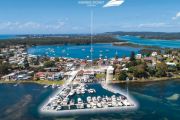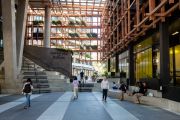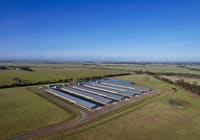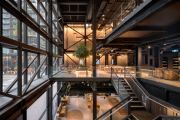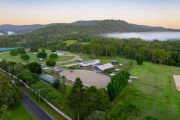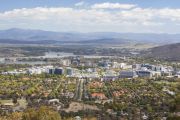
Residential development gets an $800 million new year kick
South Korean and local institutional investors keen to invest in Australia’s chronic housing shortage have kick-started the year with a combined $800 million in new residential development.
In a deal negotiated over Christmas Day and sealed on December 26, South Korea’s National Pension System has committed $700 million to Scape – on top of an initial $300 million it invested in 2020 – for student housing, and the developer’s first new build-to-rent asset in Sydney.

Half of the new NPS funding will supplement the $425 million equity pool Scape’s Rent-to-Live Co has on hand, as it kicks off work on the 1000-unit Marrickville Timberyards project in Sydney, the first in a 10,000-apartment pipeline it aims to develop by 2030.
“We can diversify,” Scape co-founder Craig Carracher told The Australian Financial Review. “This money will allow us to divert beyond Marrickville [into] additional projects as well.”
The extra investment by the South Korean state pension fund showed Australia’s build-to-rent sector was now an established asset class that offshore investors were comfortable with, and would invest more in, said Andrew Schwartz, the managing director of non-bank lender Qualitas, which has its own build-to-rent joint venture with Rich List developer Tim Gurner.
“Now it’s mainstream,” Mr Schwartz told the Financial Review. “There are lots of similar firms that will increase their investment in BTR over the next one-to-two years. That can be Japanese, it can be Korean, it can be Singaporean. There are multiple large investors across Asia-Pacific that are seriously considering Australian BTR.”
Australia’s build-to-rent pipeline is due to reach about 10,000 completions in 2027 and 2028. It is likely to grow further as more overseas investors respond to the federal government’s equalisation last year of tax rates for foreign and local investors and seek to invest in the country’s chronic housing shortage, data provider Charter Keck Cramer said.
Demolition for the Marrickville project, which amalgamated 36 titles into one 2.2-hectare site, will start, subject to approval, in July and construction in January next year.
While better known for purpose-built student accommodation, Scape founders Mr Carracher and Stephen Gaitanos in 2023 started Rent-to- Live Co, a build-to-rent platform with backing from Dutch pension fund APG and real estate manager Bouwinvest.
Scape already has offices in Beijing, Singapore and Hong Kong and would now open another one in Seoul as a result of its company’s global strategic partnership with NPS to tap unmet demand for student and build-to-rent housing in regional cities, Mr Gaitanos said.
“Establishing our South Korea office will resource our commitment with our Korean capital partners to lay strong foundations for growing across Asia,” he said. “We are privileged to be working with NPS to grow institutional investment in the residential-for-rent sectors in the Asia-Pacific”.
In a separate deal, the federal government’s Clean Energy Finance Corporation has committed $100 million to an AXA IM Alts fund that aims to develop 3000 build-to-rent units, at least half of which will be priced as affordable rental homes for eligible key worker tenants.
The boost from the federal government’s green bank adds to the $220 million already put into the fund by the alternative investment manager’s parent AXA Group and takes it closer towards the estimated $1 billion in equity required to develop 3000 homes.
The fund also has a $300 million loan facility Housing Australia provided in 2022.

The first development financed by the fund is the 397-unit project in Sydney’s Westmead that builder Deicorp is due to complete at the end of this year. Community housing provider SGCH will manage the affordable housing component in the building.
“Investing in any strategy, and specifically in affordable housing, requires scale,” Antoine Mesnage, AXA IM Alts Australia head, told the Financial Review.
“It is significant that the CEFC, a large institution, validates the conviction that we’ve had for a while around institutional capital investing in the sector globally, but specifically in Australia.”
Residential buildings are responsible for about 24 per cent of Australia’s electricity use and more than 10 per cent of total carbon emissions. The Westmead project will have a 5-star green rating and 7-star NatHERS thermal efficiency rating. Future projects will target a minimum average 7.5-star NatHERS rating, which would reduce power bills for residents, CEFC CEO Ian Learmonth said.
“Working alongside an established player like AXA IM here in Australia, we are able to use our capital to help improve the sustainability of the residential property sector,” Mr Learmonth said.
“We’re also very attracted to the affordability angle that this project presents.”
Mr Mesnage said AXA IM was looking primarily at sites in Melbourne, Sydney and Brisbane for its next project, but gave no details where, or even how soon, that would happen in a “pretty volatile” costs environment.

